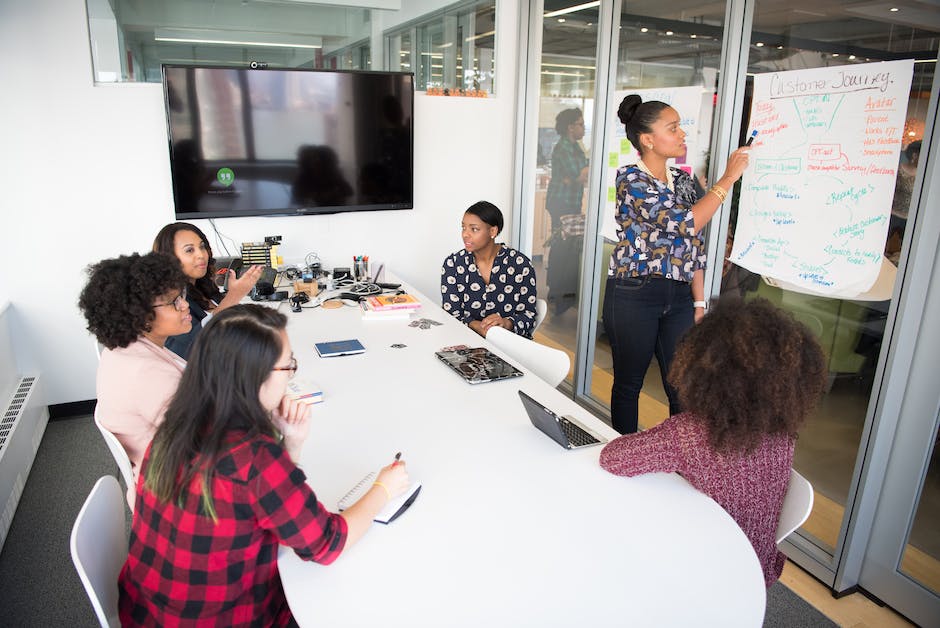Table of Contents
“Building Team Cohesion through Transitions: Strategies for Effective Teamwork” – Uniting teams for seamless success.
Introduction
Building Team Cohesion through Transitions: Strategies for Effective Teamwork
Teamwork is an essential aspect of any successful organization. However, teams often face challenges when transitioning between different projects, tasks, or team members. These transitions can disrupt team cohesion and hinder productivity. Therefore, it is crucial to implement strategies that promote effective teamwork during these transitions. This article will explore various approaches to building team cohesion through transitions, providing valuable insights and practical tips for enhancing collaboration and maintaining high-performance levels within teams.
The Importance of Building Team Cohesion during Transitions

Building Team Cohesion through Transitions: Strategies for Effective Teamwork
Transitions are an inevitable part of any team’s journey. Whether it’s a new project, a change in leadership, or the addition of new team members, transitions can be both exciting and challenging. One of the key factors that determine a team’s success during these transitions is the level of cohesion within the team. Cohesion refers to the degree to which team members work together towards a common goal and feel a sense of belonging and unity. In this article, we will explore the importance of building team cohesion during transitions and discuss strategies for effective teamwork.
Transitions can be disruptive to a team’s dynamics. They can create uncertainty, confusion, and even resistance among team members. However, when managed effectively, transitions can also be an opportunity for growth and development. Building team cohesion during these times is crucial because it helps to minimize the negative impact of transitions and maximize the team’s potential.
One of the main reasons why team cohesion is important during transitions is that it fosters open communication and trust among team members. When team members feel connected and supported, they are more likely to share their ideas, concerns, and feedback openly. This open communication allows the team to address any challenges or issues that may arise during the transition and find effective solutions together.
Another reason why team cohesion is important during transitions is that it promotes collaboration and cooperation. When team members feel a sense of belonging and unity, they are more willing to work together towards a common goal. This collaboration not only enhances the team’s performance but also creates a positive and supportive work environment.
To build team cohesion during transitions, it is important to establish clear goals and expectations. Team members need to have a shared understanding of what needs to be achieved and how their roles contribute to the overall success of the team. This clarity helps to align the team’s efforts and ensures that everyone is working towards the same objectives.
In addition to clear goals, effective communication is essential for building team cohesion during transitions. Team leaders should provide regular updates and information about the transition process, including any changes or challenges that may arise. This transparency helps to build trust and keeps team members informed and engaged.
Another strategy for building team cohesion during transitions is to provide opportunities for team members to get to know each other on a personal level. This can be done through team-building activities, social events, or even informal conversations. When team members have a deeper understanding of each other’s strengths, weaknesses, and working styles, they are better able to collaborate and support each other during the transition.
Lastly, it is important to recognize and celebrate the achievements and milestones reached during the transition. This not only boosts team morale but also reinforces the sense of unity and accomplishment. Recognizing individual contributions and expressing gratitude for the team’s efforts can go a long way in building team cohesion and motivation.
In conclusion, building team cohesion during transitions is crucial for effective teamwork. It fosters open communication, collaboration, and trust among team members, which are essential for navigating the challenges and uncertainties that come with transitions. By establishing clear goals, promoting effective communication, providing opportunities for personal connections, and recognizing achievements, teams can successfully navigate transitions and emerge stronger and more cohesive than before.
Strategies for Fostering Effective Communication within a Team
Effective communication is the cornerstone of any successful team. Without clear and open lines of communication, team members may struggle to understand their roles and responsibilities, leading to confusion and inefficiency. In order to foster effective communication within a team, there are several strategies that can be employed.
First and foremost, it is important to establish a culture of open communication within the team. This means creating an environment where team members feel comfortable expressing their thoughts and ideas, as well as voicing any concerns or issues they may have. This can be achieved by encouraging active listening and providing opportunities for team members to share their perspectives.
Another strategy for fostering effective communication is to establish clear channels of communication. This includes determining the most appropriate methods for communication, such as face-to-face meetings, email, or instant messaging. It is also important to establish guidelines for when and how team members should communicate, such as setting regular meeting times or establishing response time expectations.
In addition to establishing clear channels of communication, it is also important to ensure that team members have the necessary tools and resources to effectively communicate. This may include providing access to technology, such as video conferencing software or project management tools, as well as providing training on how to use these tools effectively. By providing the necessary resources, team members can communicate more efficiently and effectively.
Another strategy for fostering effective communication within a team is to encourage collaboration and teamwork. This can be achieved by assigning tasks and projects that require team members to work together and rely on each other’s expertise. By working together, team members can learn from one another and develop a shared understanding of the team’s goals and objectives.
Furthermore, it is important to establish clear expectations for communication within the team. This includes setting guidelines for how often team members should communicate, as well as what information should be shared. By establishing clear expectations, team members can avoid misunderstandings and ensure that everyone is on the same page.
Finally, it is important to regularly evaluate and assess the effectiveness of the team’s communication strategies. This can be done through regular team meetings or surveys that allow team members to provide feedback on the team’s communication processes. By regularly evaluating and assessing the team’s communication strategies, adjustments can be made as needed to ensure that the team is communicating effectively.
In conclusion, effective communication is essential for building team cohesion and fostering effective teamwork. By establishing a culture of open communication, establishing clear channels of communication, providing the necessary tools and resources, encouraging collaboration and teamwork, setting clear expectations, and regularly evaluating and assessing communication strategies, teams can enhance their communication processes and work together more effectively. By implementing these strategies, teams can improve their overall performance and achieve their goals more efficiently.
Enhancing Trust and Collaboration in a Team during Transitions
Building Team Cohesion through Transitions: Strategies for Effective Teamwork
Transitions are an inevitable part of any team’s journey. Whether it’s a new member joining the team, a change in leadership, or a shift in project focus, transitions can disrupt the flow of work and impact team dynamics. However, with the right strategies in place, teams can navigate these transitions smoothly and even use them as opportunities to enhance trust and collaboration.
One of the key factors in building team cohesion during transitions is effective communication. Open and transparent communication is crucial in ensuring that everyone is on the same page and understands the goals and expectations of the team. During times of transition, it is important for team members to have a clear understanding of their roles and responsibilities. This can be achieved through regular team meetings, where team members can discuss any concerns or questions they may have. Additionally, providing regular updates and progress reports can help keep everyone informed and engaged.
Another strategy for enhancing trust and collaboration during transitions is to foster a culture of psychological safety within the team. Psychological safety refers to an environment where team members feel comfortable taking risks, sharing their ideas, and expressing their concerns without fear of judgment or retribution. This can be achieved by creating an atmosphere of respect and empathy, where everyone’s opinions are valued and considered. Team leaders can also encourage open dialogue and active listening, ensuring that everyone’s voice is heard and respected.
During times of transition, it is also important to provide support and resources to team members. Change can be challenging, and team members may need additional guidance or training to adapt to new roles or responsibilities. By offering support and resources, team leaders can help alleviate any anxiety or uncertainty that team members may be experiencing. This can include providing training sessions, mentoring programs, or access to external resources and experts. By investing in the development of team members, leaders can not only enhance their skills but also foster a sense of trust and loyalty within the team.
In addition to communication, psychological safety, and support, effective teamwork during transitions also requires a clear and shared vision. Team members need to understand the purpose and direction of the team, as well as how their individual contributions fit into the bigger picture. This can be achieved through regular goal-setting sessions, where team members can collectively define their objectives and develop a plan to achieve them. By involving everyone in the goal-setting process, team leaders can ensure that everyone is aligned and committed to the team’s vision.
Finally, it is important to celebrate successes and milestones during times of transition. Recognizing and acknowledging the achievements of the team can boost morale and motivation, and create a sense of unity and pride. This can be done through team-building activities, rewards and recognition programs, or simply taking the time to express gratitude and appreciation for each team member’s contributions. By celebrating successes, team leaders can reinforce a positive team culture and inspire continued collaboration and commitment.
In conclusion, transitions can be challenging for teams, but with the right strategies in place, they can also be opportunities for growth and development. By focusing on effective communication, fostering psychological safety, providing support and resources, defining a clear vision, and celebrating successes, teams can enhance trust and collaboration during times of transition. Building team cohesion through transitions is not only essential for effective teamwork but also for the long-term success and sustainability of the team.
Promoting a Positive Team Culture for Successful Transitions
Building Team Cohesion through Transitions: Strategies for Effective Teamwork
Promoting a Positive Team Culture for Successful Transitions
In today’s fast-paced and ever-changing business environment, teams are often faced with the challenge of navigating through transitions. Whether it’s a change in leadership, a restructuring of roles and responsibilities, or a merger with another department, these transitions can disrupt team dynamics and hinder productivity. However, with the right strategies in place, teams can not only survive these transitions but also thrive and build stronger cohesion.
One of the key factors in promoting a positive team culture during transitions is effective communication. Open and transparent communication channels are essential for keeping team members informed and engaged. Regular team meetings, both formal and informal, provide an opportunity for team members to share their thoughts, concerns, and ideas. This fosters a sense of belonging and ensures that everyone is on the same page.
During transitions, it’s also important for team leaders to actively listen to their team members. This means not only hearing what they have to say but also understanding their perspectives and addressing their needs. By actively listening, team leaders can build trust and create an environment where team members feel valued and supported.
Another strategy for promoting a positive team culture during transitions is to encourage collaboration and teamwork. When team members work together towards a common goal, they are more likely to overcome challenges and adapt to changes. This can be achieved through team-building activities, such as workshops or retreats, where team members can bond and develop a shared sense of purpose.
In addition to collaboration, it’s crucial for team leaders to provide clear direction and guidance during transitions. Uncertainty can breed anxiety and confusion, which can negatively impact team cohesion. By setting clear goals and expectations, team leaders can provide a sense of stability and direction. This clarity helps team members stay focused and motivated, even in the face of uncertainty.
Furthermore, team leaders should also empower their team members to take ownership of their work and contribute their unique skills and expertise. When team members feel empowered, they are more likely to take initiative and contribute to the team’s success. This not only enhances team cohesion but also fosters a sense of ownership and accountability.
Lastly, promoting a positive team culture during transitions requires recognizing and celebrating achievements. Transition periods can be challenging, and it’s important to acknowledge the hard work and dedication of team members. Recognizing achievements, whether big or small, boosts morale and motivates team members to continue working towards their goals.
In conclusion, building team cohesion through transitions is crucial for effective teamwork. By promoting a positive team culture, teams can navigate through transitions with ease and build stronger bonds. Effective communication, collaboration, clear direction, empowerment, and recognition are all key strategies that can help teams thrive during times of change. With these strategies in place, teams can not only survive transitions but also emerge stronger and more resilient.
Q&A
1. What is team cohesion?
Team cohesion refers to the degree of unity, trust, and cooperation among team members.
2. Why is team cohesion important?
Team cohesion is important as it enhances communication, collaboration, and overall team performance. It also promotes a positive work environment and helps in achieving common goals.
3. What are some strategies for building team cohesion during transitions?
Some strategies for building team cohesion during transitions include clear communication, fostering trust and respect, promoting team bonding activities, providing support and resources, and encouraging open and honest feedback.
4. How can effective teamwork be achieved through building team cohesion?
Effective teamwork can be achieved through building team cohesion by creating a shared vision and goals, establishing clear roles and responsibilities, promoting effective communication and collaboration, and recognizing and celebrating team achievements.
Conclusion
In conclusion, building team cohesion through transitions is crucial for effective teamwork. By implementing strategies such as clear communication, establishing shared goals, fostering trust, and providing support, teams can navigate transitions successfully and maintain strong cohesion. This cohesion not only enhances team performance but also promotes a positive work environment and overall team satisfaction.




